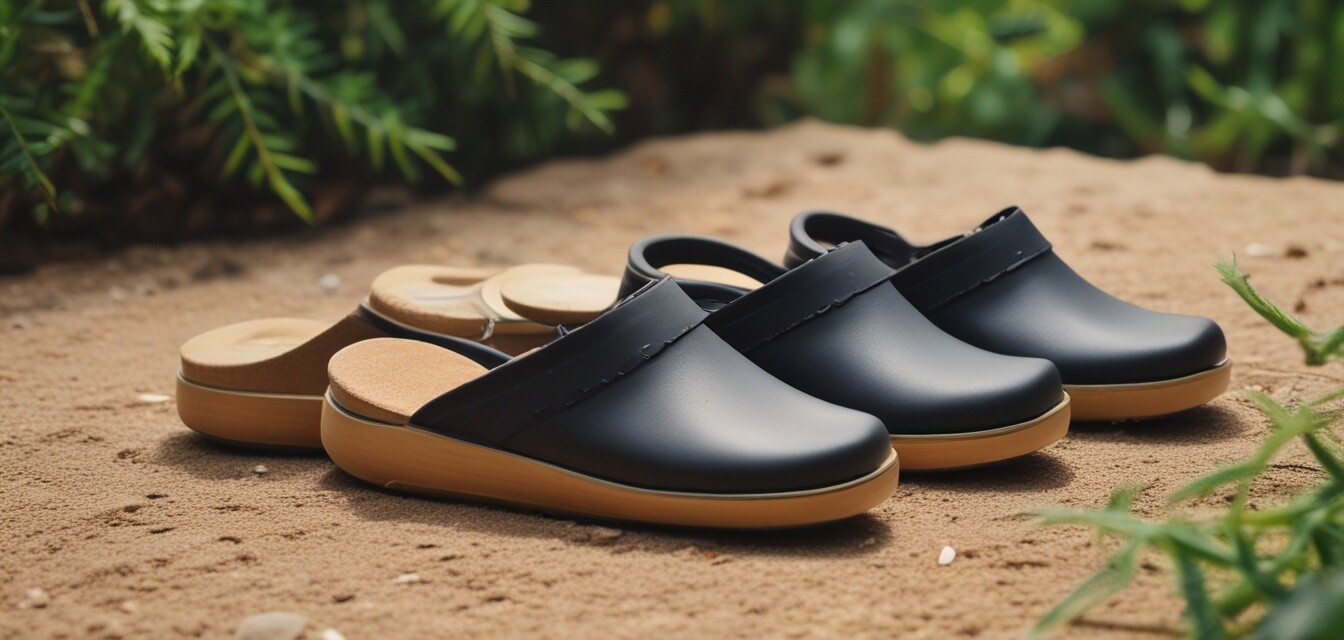
The rise of eco-friendly footwear in 2025
Key Takeaways
- Eco-friendly lounge footwear is gaining significant traction in 2025.
- Brands leverage sustainable materials to offer comfort without compromising the environment.
- Consumer demand for sustainable products drives innovation in design and production.
- Popular categories include closed-toe clogs, open-toe slides, and recovery footwear.
- Understanding market trends equips consumers to make eco-conscious choices.
In recent years, especially in 2025, eco-friendly footwear has become more than just a trend; it has evolved into a necessity for many consumers. Today, more people are prioritizing sustainability in their purchasing decisions, and the footwear industry has responded by innovating in design and material use. This article delves into the latest trends surrounding eco-friendly lounge footwear, highlighting innovations and brands that are leading the charge.
Why eco-friendly footwear matters
As environmental concerns rise, consumers are looking for ways to minimize their impact. Eco-friendly footwear not only caters to this desire but also enhances comfort and versatility. By using sustainable materials, brands create products that are gentler on our planet while still meeting the needs of everyday wear.
Types of eco-friendly materials
One of the key factors driving the rise of eco-friendly footwear is the use of alternative, sustainable materials. Here are some of the most popular materials that brands are using:
| Material | Description | Benefits |
|---|---|---|
| Recycled Plastic | Made from post-consumer waste, helping to reduce landfill. | Durable, lightweight, and often waterproof. |
| Bamboo Fiber | A fast-growing crop that produces soft, breathable fabric. | Naturally antibacterial and moisture-wicking. |
| Natural Rubber | Sourced from the rubber tree, providing a flexible sole. | Biodegradable and provides excellent cushioning. |
| Organic Cotton | Cotton grown without synthetic fertilizers or pesticides. | Soft, breathable, and environmentally friendly. |
| Hemp | A highly durable and sustainable fabric option. | Requires less water and grows quickly. |
Trends in eco-friendly footwear for 2025
As we move deeper into 2025, several trends are shaping the eco-friendly footwear market:
- Innovative designs: Brands are embracing creativity to blend aesthetics with sustainability.
- Comfort-focused construction: Greater emphasis is being placed on ergonomic designs for all-day comfort.
- Customizable options: Personalization in footwear selection is on the rise, allowing consumers to express their style.
- Transparency in sourcing: Consumers favor brands that provide clear information about their sourcing practices.
- Secondhand markets: Resale platforms are becoming popular for eco-conscious shoppers looking for sustainable choices.
Popular eco-friendly footwear categories
As comfort and sustainability merge, various footwear categories are becoming popular among consumers:
| Category | Description | Usage |
|---|---|---|
| Closed-Toe Clogs | All-purpose footwear that provides excellent support. | Ideal for gardening, casual outings, and light work. |
| Open-Toe Pillow Slides | Relaxed and breathable slippers perfect for home wear. | Best for lounging, beach trips, and quick errand runs. |
| Quick-Drying Shower Sandals | Water-resistant sandals that dry quickly. | Great for poolside and beach environments. |
| Recovery Footwear | Specialized footwear designed with arch support and cushion. | Excellent for post-workout recovery or all-day wear. |
Brand innovations leading the way
Several brands are at the forefront of the eco-friendly footwear movement. These companies are making significant strides in:
- Material innovation: Developing new eco-friendly materials that ensure quality.
- Manufacturing practices: Using sustainable production techniques to minimize waste.
- Community initiatives: Supporting environmental projects and awareness campaigns.
Consumer preferences and market growth
Consumer preferences are shifting, with a clear focus on sustainable products that align with personal values. The growing market for eco-friendly footwear illustrates this trend:
Pros
- Reduced environmental impact.
- Comfort and practicality.
- Increased innovation in design.
- Support for ethical brands.
Cons
- Potentially higher price point.
- Limited availability in some areas.
- Possible design limitations compared to traditional footwear.
Conclusion
The surge in the popularity of eco-friendly footwear in 2025 reflects a critical shift in consumer values. With a focus on sustainable materials and innovative designs, eco-friendly lounge footwear not only meets the need for comfort but also contributes positively to our planet. As the market continues to grow, staying updated with the latest trends, particularly through our News and Trends section, will ensure that you don’t miss out on what's hot in eco-friendly footwear!

